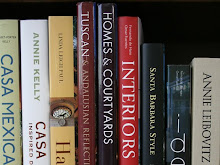
 Seated around the plaza, we found art students from the École des Beaux-Arts, sketching their day's lesson. It was inspiring just to experience.
Seated around the plaza, we found art students from the École des Beaux-Arts, sketching their day's lesson. It was inspiring just to experience.Across from the church plaza is the famed café Les Deux Magots, known to have attracted such inspired patrons as Ernest Hemingway, Jean-Paul Sartre, Albert Camus and Pablo Picasso. The scene was so typical of French cafés. Small tables positioned tightly around the exterior of the entrance, beneath the awning, all facing the street.
 It is a favorite past-time to people watch while enjoying mouth-watering delights. French onion soup, quiche, baguette, tarte tatin, and of course, le café. Coffee in France is typically served strong and black in petite demi-tasse cups with cubed sugar. Once you've acquired its taste, however, there's no comparison to its aroma or body...
It is a favorite past-time to people watch while enjoying mouth-watering delights. French onion soup, quiche, baguette, tarte tatin, and of course, le café. Coffee in France is typically served strong and black in petite demi-tasse cups with cubed sugar. Once you've acquired its taste, however, there's no comparison to its aroma or body...Pulling ourselves away from the temptation of gluttony, we continued down Rue Boneparte, passing the École des Beaux-Arts. This famous school has trained some of the world's most renowned artists and architects. American architect Julia Morgan, best known for her work on the Hearst Castle in San Simeon, California, was the first female to gratuate from their architecture program.
 At last, we reached the stone-walled bank of the beautiful Seine river. Its numerous batobus tours were running up and down the waterway. On the opposite bank, the Louvre stood majestic and vast. Originally the royal palace, it is now the world's most visited art museum. And housing 35,000 objects, is one of the largest. (More on the Louvre in a future blog.)
At last, we reached the stone-walled bank of the beautiful Seine river. Its numerous batobus tours were running up and down the waterway. On the opposite bank, the Louvre stood majestic and vast. Originally the royal palace, it is now the world's most visited art museum. And housing 35,000 objects, is one of the largest. (More on the Louvre in a future blog.)
 The leaves were beginning to turn autumn shades. The air was crisp and clean, warming as the day progressed. We followed the river bank path, passing the Institut de France...
The leaves were beginning to turn autumn shades. The air was crisp and clean, warming as the day progressed. We followed the river bank path, passing the Institut de France...
 photo by Benh LIEU SONG from Pont des Arts
photo by Benh LIEU SONG from Pont des ArtsFrom there we could see Pont Neuf, Paris' oldest standing bridge. From this arch bridge, the eastern side of the Île de la Cité connects to the city's two banks. The Île de la Cité is one of two naturally formed island in the city, along with the Île Saint-Louis. It is the heart of the city from which all roads are calculated and its medieval birthplace. Historically, a small Gallic tribe, the Parisii, are thought to have lived on this island from the 3rd century BC-the Roman era during the Iron Age. It remained an important military and political center throughout the Middle Ages. The 16th century details and stone carvings of the bridge can be seen from below.
The 16th century details and stone carvings of the bridge can be seen from below.
These projecting curved elements topping each abutment are bench seats, accessed from the walkway above. Lovers can cozy up, embraced by its curve and the knowledge that the city surrounds them. It's no wonder that this city is known for its romance.
Next stop... Notre Dame de Paris...





No comments:
Post a Comment